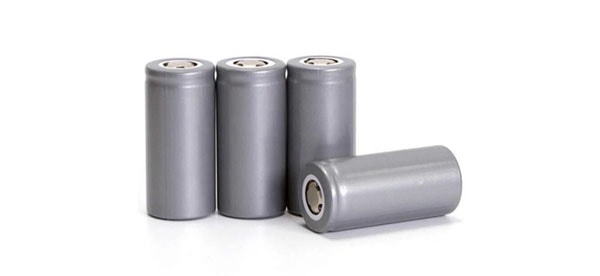The 18650 battery, a rechargeable lithium-ion marvel, has gained immense popularity in the world of portable energy solutions. These cylindrical powerhouses, known for their 3.7-volt voltage and capacity ranging from 1800mAh to 3500mAh, have become a reliable choice for powering a wide range of electronic devices.
Understanding 18650 Batteries: Power in Your Hands
An 18650 battery operates within a voltage range of 2.5 volts to 4.2 volts, with a nominal voltage of 3.7 volts. It comes in two types: protected and unprotected. We strongly recommend using protected 18650 batteries as they feature built-in circuitry that prevents overcharging and safeguards against excessive discharge. Unprotected batteries lack this protection and can be prone to overcharging, potentially leading to hazardous situations. It’s important to exercise caution and only use unprotected batteries in devices explicitly designed for their use.
Quality Matters: Choosing the Right 18650 Battery
Opting for high-quality, brand-name 18650 batteries is crucial to ensure reliability and safety. Counterfeit batteries often exaggerate their capacity (mAh rating), making it essential to purchase from reputable sources to avoid disappointment and potential risks.
Additionally, it’s important to consider the specific requirements of your device when selecting an 18650 battery. Matching the power needs of your device with the discharge capability of the battery is essential. By ensuring that the device’s power draw remains within the battery’s discharge rate, you can optimize performance and avoid unnecessary strain on the battery.
Exploring 18650 Battery Sizes and Comparisons
18650 batteries stand out among various battery sizes in terms of their capacity and capabilities. While the 18650 measures around 1170 cubic millimeters, other popular sizes like 14500 and AA batteries measure around 700 cubic millimeters, and the AAA battery comes in at around 467 cubic millimeters. It’s worth noting that 14500 batteries cannot be used interchangeably with AA devices unless explicitly supported by the device, accommodating both 3.7-volt and 1.5-volt batteries. Another notable size is the 21700 battery, which exceeds the dimensions of the 18650 battery at approximately 1550 cubic millimeters, making them non-interchangeable.
Ensuring Longevity: Battery Lifespan and Recharge Cycles
Understanding the recharge cycle limitations of 18650 batteries, and rechargeable batteries in general, is essential. Over time, rechargeable batteries degrade due to oxidation and electro-chemical degradation, which impacts their capacity to hold a charge. The lifespan of an 18650 battery can range from 300 to as many as 2000 recharge cycles, depending on the specific model and usage patterns.
To maximize the lifespan of your 18650 battery, it’s recommended to discharge the battery to around 3 volts before recharging. Some users prefer not to let the battery drop below 3.3 volts to extend its overall life. Monitoring voltage levels and utilizing a good charger can help gauge the condition and performance of the battery.
Recognizing Signs of Battery Degradation
To ensure safety and optimal performance, it’s essential to be aware of signs that indicate your 18650 battery may be nearing the end of its life. Here are six indicators that suggest it’s time to retire your battery:
- Rapid discharge when stored, losing charge within a few days or even overnight.
- Excessive heat generation during charging or discharging, exceeding normal levels.
- Regular usage over a span of 2 to 3 years.
- Inability to retain more than 80% of its original capacity.
- Abnormally long recharge times, indicating reduced efficiency.
- Visible signs of damage, such as cracking, deformation, or leakage.
If you notice any of these signs, it’s crucial to dispose of the 18650 battery properly and replace it with a new one to avoid potential risks like fire or explosion during charging.
Measuring Battery Quality and Age
If you’re uncertain about the age or quality of a battery, a useful approach is to compare it to known new batteries. Marking new batteries as “A,” “B,” or “C” and comparing their voltage levels and discharge rates with the unknown battery can provide valuable insights into its condition and performance.
Additionally, monitoring temperature during charging can offer further clues. Compare the heat generated by the new battery with that of the questionable one to assess its overall health.
Delving into 18650 Battery Chemistry
18650 batteries come in various chemical compositions, each with its own advantages. While the most commonly found chemistry is lithium-ion (Li-ion), specific types include:
| Lithium Battery Chemistry | Abbreviation | Main Features | Applications |
|---|---|---|---|
| LiFePO4 (Lithium iron phosphate) | LiFePO4 | High cycle life, excellent thermal stability | Electric vehicles, solar energy storage, backup power |
| LiMn2O4 (Lithium manganese oxide) | LiMn2O4 | High power output, good safety performance | Power tools, electric bicycles, medical devices |
| LiNiMnCoO2 (Lithium manganese nickel cobalt oxide) | LiNiMnCoO2 | High energy density, balanced performance | Electric vehicles, portable electronics, power banks |
| LiNiCoAlO2 (Lithium nickel cobalt aluminum oxide) | LiNiCoAlO2 | High energy density, excellent thermal stability | Laptops, smartphones, tablets, wearable devices |
| LiNiCoO2 (Lithium nickel cobalt oxide) | LiNiCoO2 | High energy density, moderate cycle life | Consumer electronics, power tools, electric vehicles |
| LiCoO2 (Lithium cobalt oxide) | LiCoO2 | High energy density, lower cost | Laptops, smartphones, digital cameras, electronic devices |
The choice of battery chemistry depends on the requirements of your device and its intended use.
Applications and Beyond: Powering the Future
18650 batteries find their place in a wide array of applications. From flashlights, electronics, and laptops to vaping devices and even some electric vehicles like Tesla, these batteries provide reliable power for diverse needs. Their compact size and high energy density make them particularly suitable for portable devices, while their longevity and rechargeable nature contribute to sustainable energy solutions.
As technology advances, the power and capabilities of 18650 batteries continue to evolve. Harnessing their potential and understanding their limitations will empower you to make informed choices and extract maximum performance from your electronic devices.
Conclusion: Empower Your Devices with 18650 Batteries
In summary, 18650 batteries offer a versatile and reliable power solution for a wide range of electronic devices. By selecting high-quality, protected batteries and understanding the key factors that affect battery performance, you can ensure safety, longevity, and optimal performance. Embrace the power of 18650 batteries and embark on a journey of portable power that will fuel your devices and illuminate your path for years to come.

